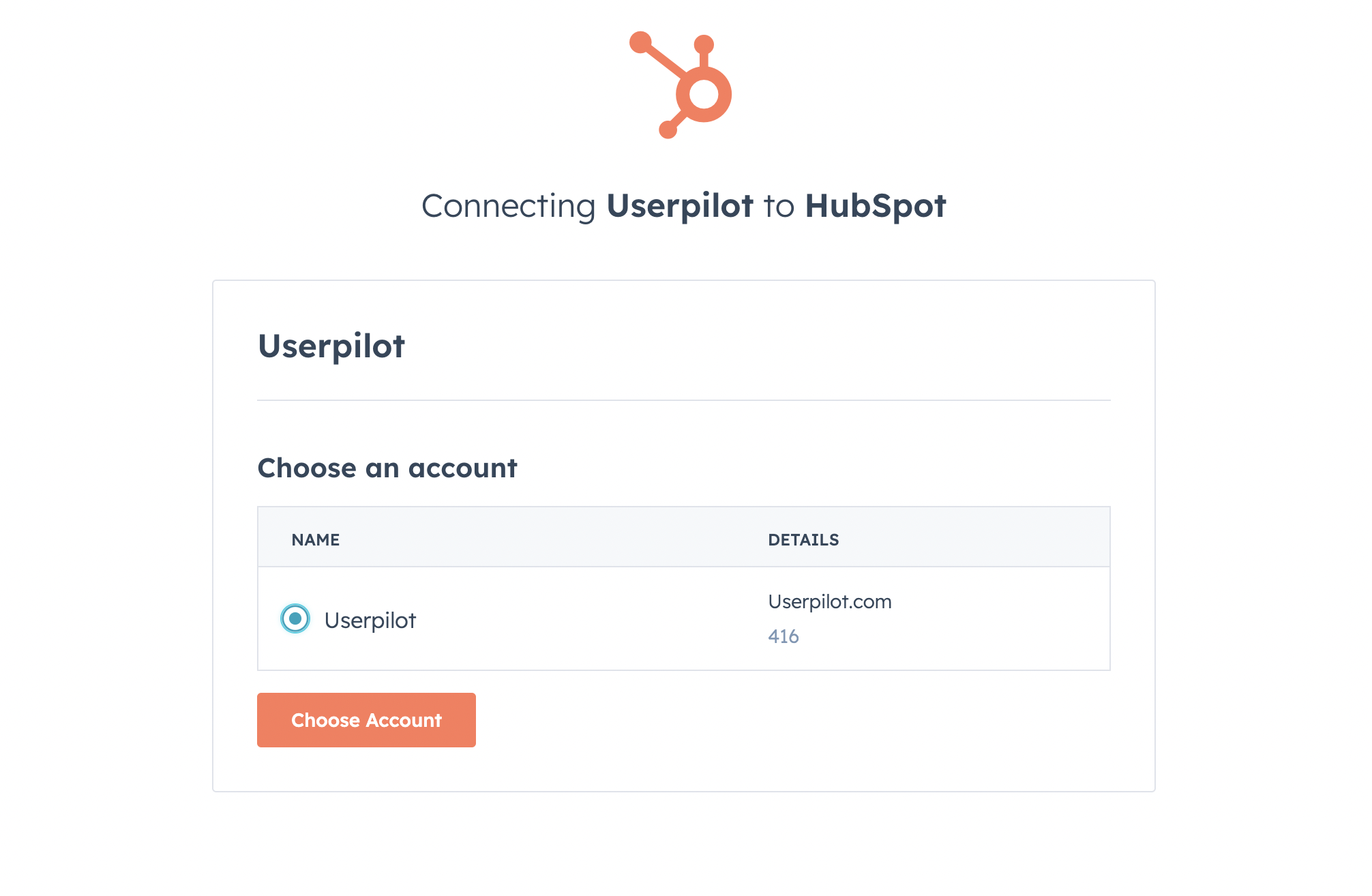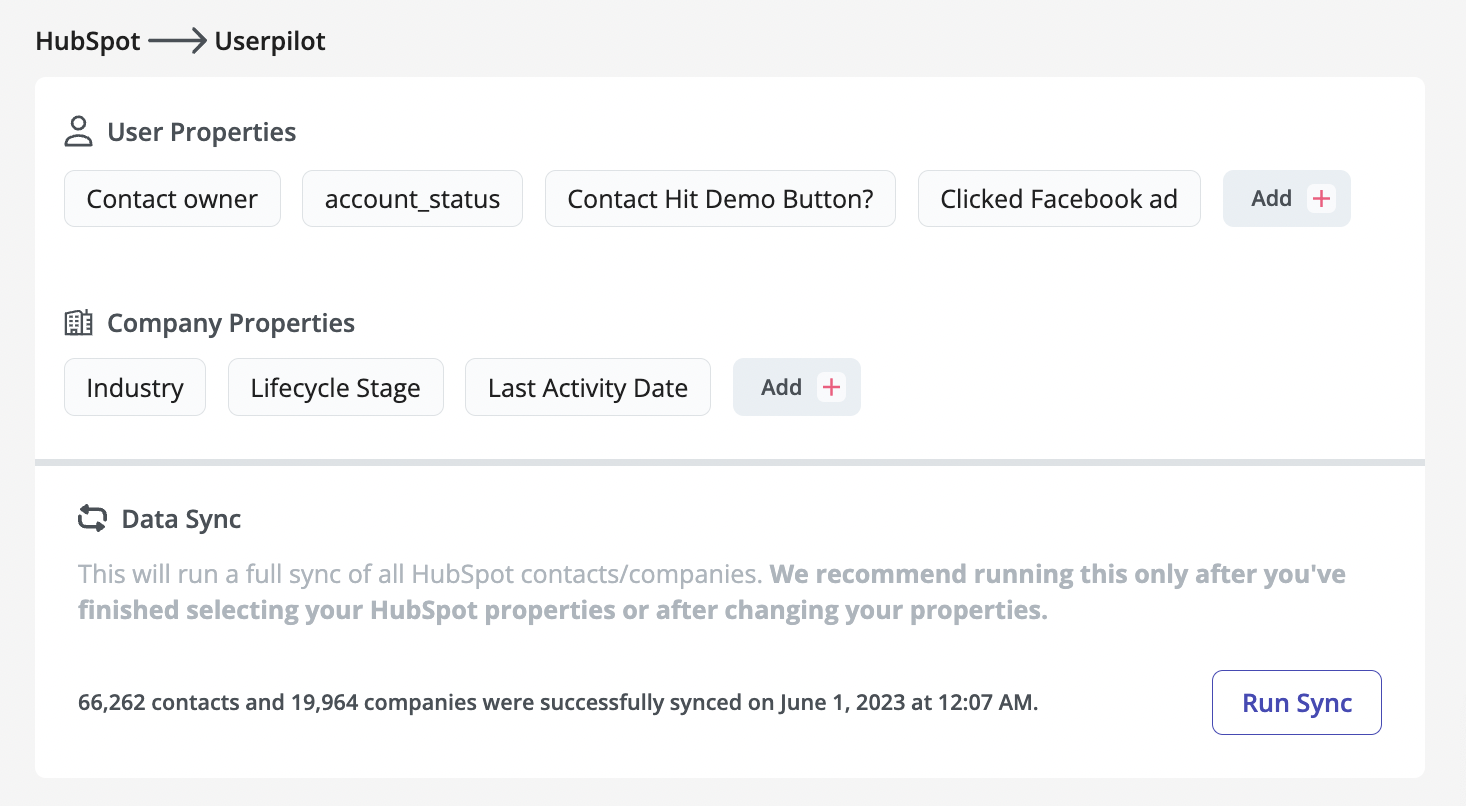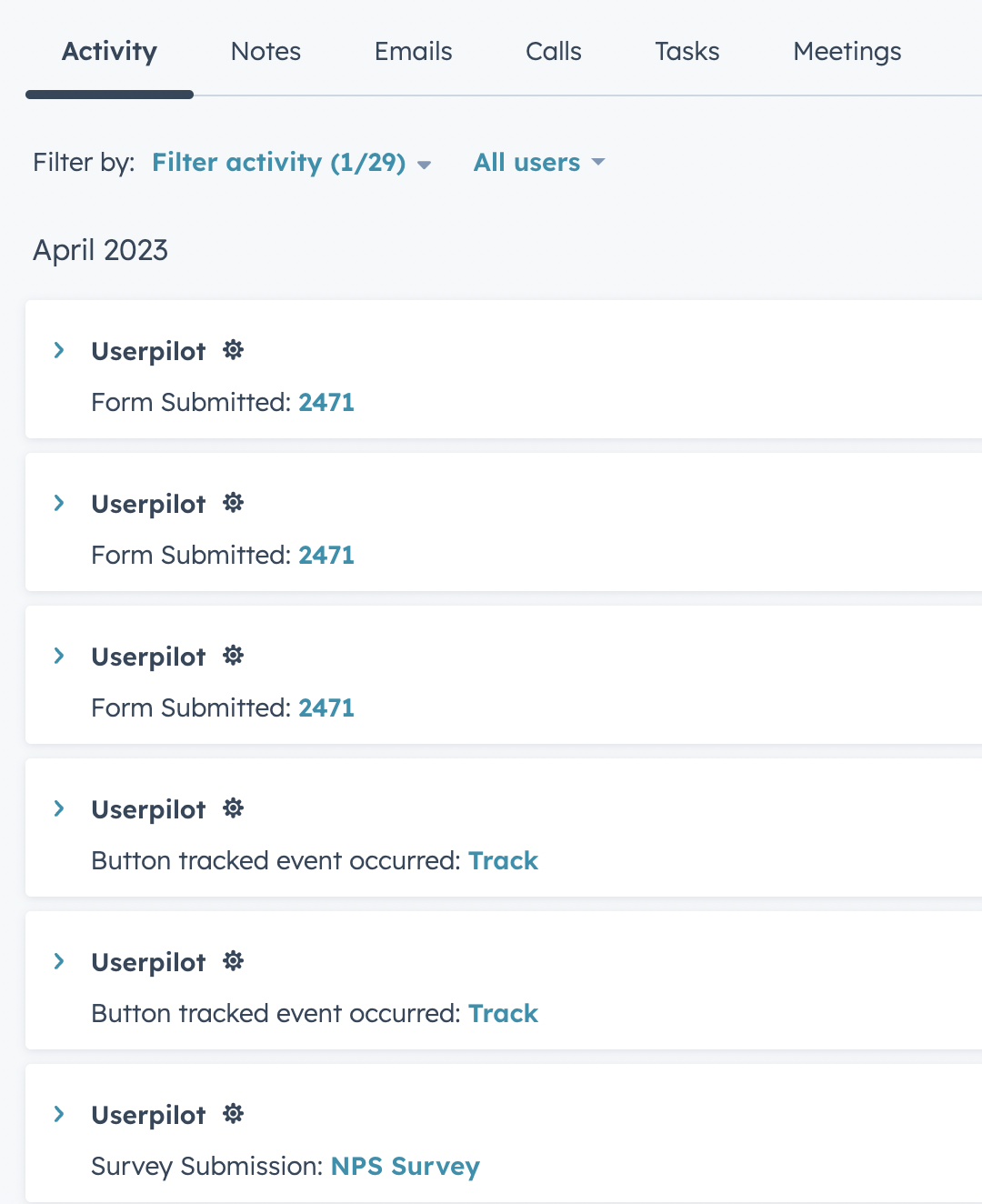This integration is available as an Add On for Growth and Enterprise plans.
Overview
The two-way HubSpot integration with Userpilot enables you to seamlessly connect your in-app experiences with your customer relationship management (CRM) data. By syncing user properties and events between Userpilot and HubSpot, you can create more personalized and data-driven user experiences.Use Cases
Personalize In-App Experiences
Personalize In-App Experiences
Leverage HubSpot contact/company properties to segment users and trigger relevant in-app flows, such as:
- Custom onboarding based on user role or lifecycle stage.
- Feature announcements tailored to past interactions.
- Trigger proactive in-app messages for leads marked as high-priority in HubSpot.
Automate HubSpot Workflows
Automate HubSpot Workflows
Send Userpilot events, such as user interactions and survey responses, to HubSpot to trigger automated workflows:
- Add users to nurture campaigns when they engage with specific product features.
- Assign leads to sales reps when they complete key activation milestones in the product.
- Trigger follow-ups when users leave low NPS scores.
Sync Product Usage Data
Sync Product Usage Data
Ensure sales and support teams have real-time insights:
- Provide sales teams tailor outreaches with real-time product usage data
- Enable customer success teams to proactively engage with at-risk users.
- Enhance marketing segmentation by syncing feature adoption trends.
Boost Retention & Engagement
Boost Retention & Engagement
Use data from both platforms to create retention strategies:
- Identify power users and invite them to beta programs or exclusive webinars.
- Automate re-engagement emails for users who stopped using a critical feature.
- Detect churn risks based on in-app behavior and trigger proactive interventions.
Set up the Integration
1
Connect your HubSpot account
- Navigate to the integrations page and click on the “HubSpot” integration
- Select the HubSpot account that you want to integrate with

- Select your Data Flow Direction : Both ways, HubSpot to Userpilot, or Userpilot to HubSpot
2
Map the user/company properties
Properly mapping user and company properties between Userpilot and HubSpot ensures accurate data synchronization

| Property Type | Mapping Method | Requirement |
|---|---|---|
| User/Contact Properties | Option A: HubSpot ID Mapping | The HubSpot Contact ID must match the User ID passed to Userpilot in the identify call. |
| Option B: Email Address Mapping | The HubSpot Contact Email must match the email field passed to Userpilot in the identify call. | |
| Company Properties (Optional) | HubSpot Company ID Mapping | The HubSpot Company ID must match the Company ID passed to Userpilot in the identify call. |
3
Configure Data and Events
- HubSpot → Userpilot
- Userpilot → HubSpot
Select the list of user/company properties that exist in HubSpot in order to sync them in Userpilot.The data will be updated in real-time.

View Events in HubSpot
Once you click on save, you will start to see the events appear under the “Activity” tab for a contact or company.
FAQs
Does the Userpilot-HubSpot integration sync past events or only new ones?
Does the Userpilot-HubSpot integration sync past events or only new ones?
The integration does not sync past events—only new events are sent to HubSpot after the sync is enabled.
Do I need to re-run the sync to sync new contacts/companies?
Do I need to re-run the sync to sync new contacts/companies?
No, manual sync is only needed for the initial bulk sync of fully populated users/contacts. After that, data syncs in real time.
How does real-time syncing work?
How does real-time syncing work?
Userpilot automatically syncs data in these cases:
- A user triggers an event selected in the integration settings.
- A new contact is created in HubSpot.
- A mapped contact property is updated in HubSpot.
